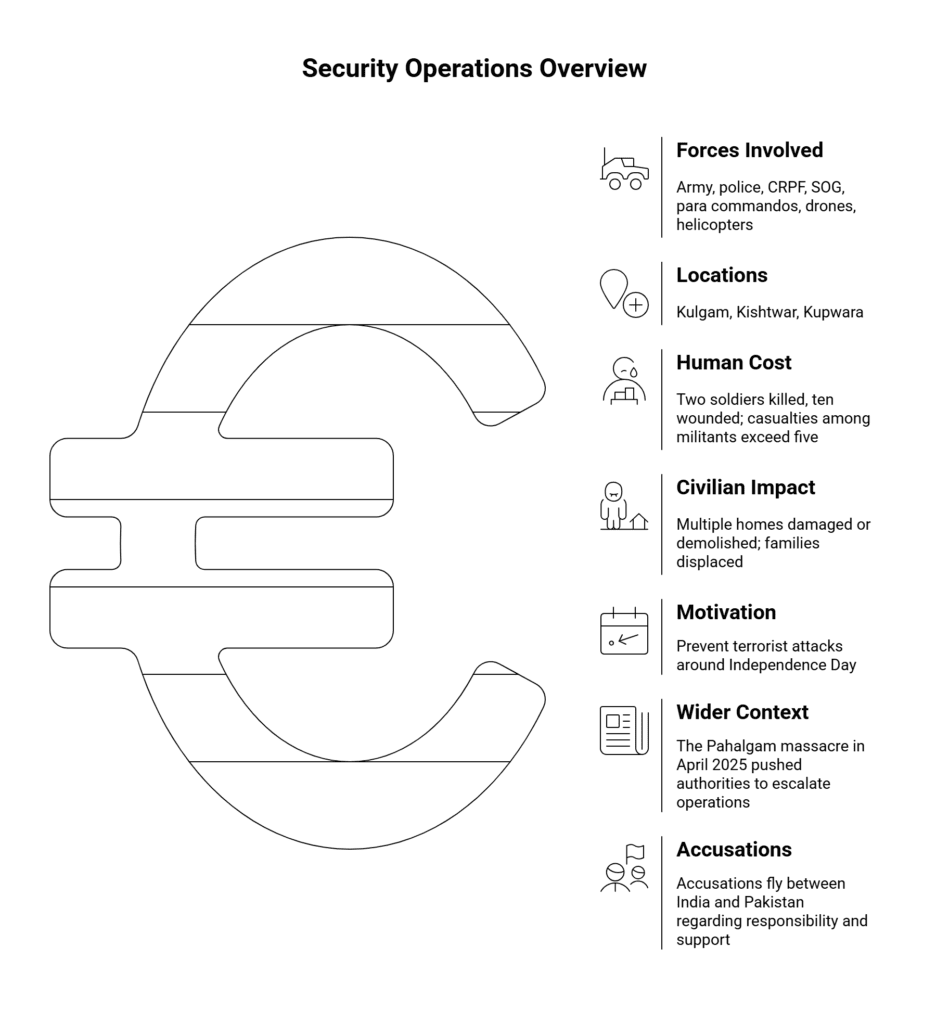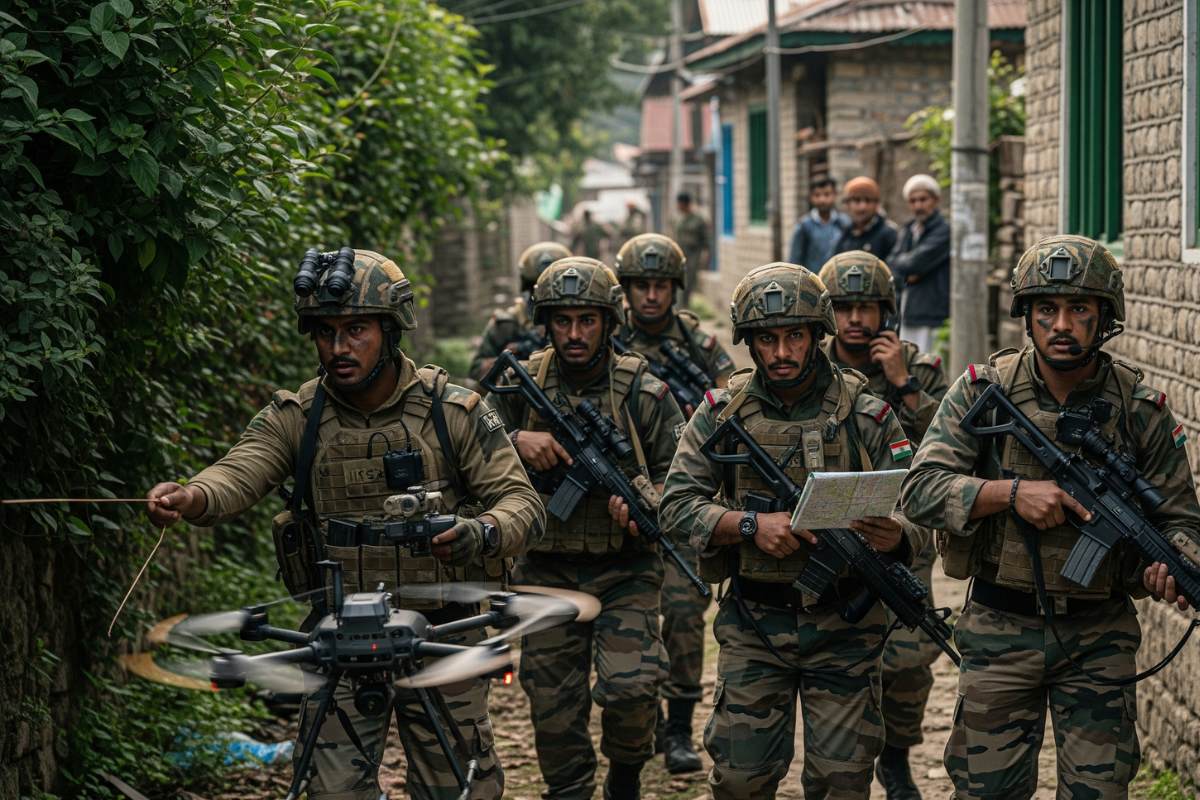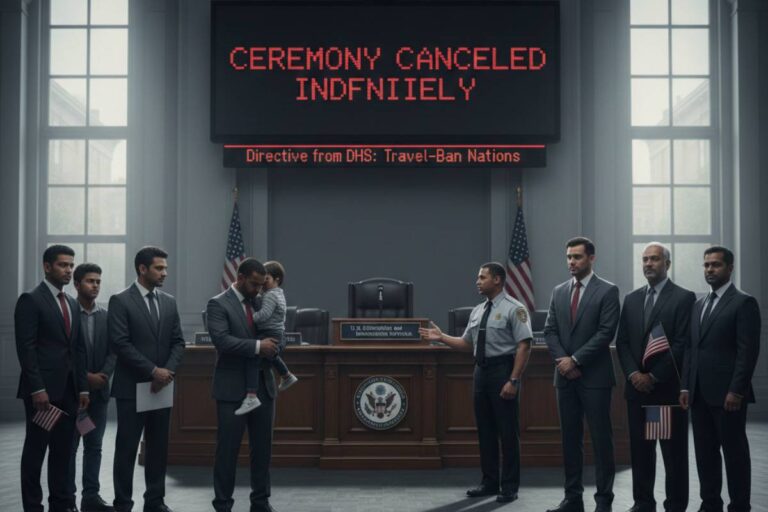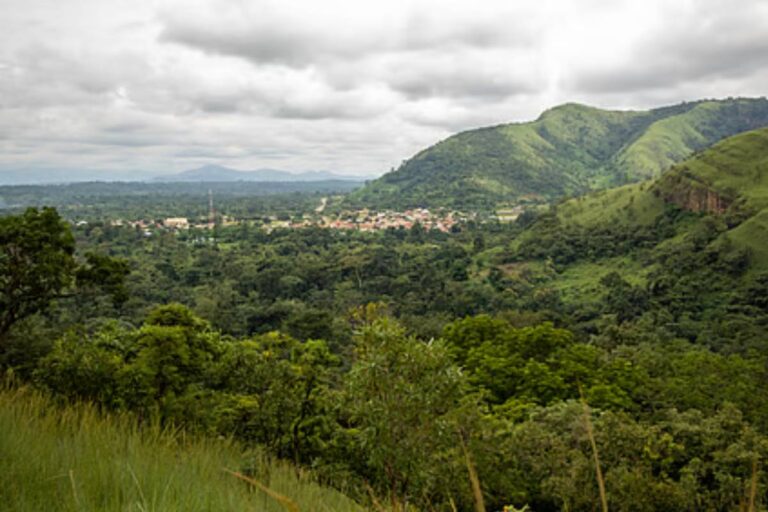Funny thing is, every August, the tension in Jammu and Kashmir ramps up. Independence Day always lands heavy. But in 2025, things felt especially intense. This year, dozens of houses, homes linked to suspected militants, were swept up in a massive, coordinated security operation stretching across the region. Picture it: security teams ready and waiting, every corner of Kulgam district buzzing with activity… and the mood? Charged. Uncertain. It’s hard to ignore.
Anatomy of a Raid: Detailed Breakdown
Security personnel zeroed in on districts with long histories of militancy:
- Kulgam, in South Kashmir, is forested, hilly, and hard to search
- Kishtwar, notorious for its cross-border networks
- Kupwara, often cited for infiltration routes with Pakistan
Most operations centered on Akhal in Kulgam, where the terrain complicated search efforts. Dense forests, winding roads, and families watching from a distance, barely daring to step out.
Who Was Involved?
It wasn’t just the army this time.
- Indian Army (including para commandos)
- Jammu and Kashmir Police
- Central Reserve Police Force (CRPF)
- Special Operations Group (SOG)
All hands on deck. The idea? Leave no stone, or hideout, unturned. Helicopters occasionally thumped overhead. Drones buzzed, seeking movement among the trees.
Independence Day Looms: The Annual Security Dilemma
Here’s the kicker: India’s Independence Day, celebrated on August 15, often triggers unrest in Kashmir, where separatist sentiment runs deep. Leading up to the festivities, authorities ramp up surveillance and, sometimes, direct crackdown on suspected militant networks.
The 2025 campaign felt supercharged.
- Last year, intermittent raids netted several low-level operatives.
- This year, officials wanted to cripple any planned attacks preemptively.
And that meant combing through homes. Not just of the active militants, but also where associates or extended families could be living. Even neighbors ended up witnessing the chaos.
Not Just a Search Operation: Direct Confrontation
Let’s be clear. These weren’t quite house-calls. In Kulgam alone, Operation Akhal (that’s what security agencies dubbed it) stretched into its ninth straight day by August 9, 2025. Here’s what unfolded:
- Night after night, Gunfights broke out, sometimes sudden, sometimes drawn out.
- Explosives dropped by drones meant no hiding spot felt safe.
- Search cordons kept tightening, inch by inch.
The result: More than five militants killed, though identities remain under wraps. Official accounts confirmed that at least two were foreign nationals, believed to be connected to Pakistan-based groups specializing in jungle combat.
Sacrifice on the Frontlines: Human Cost of the Operation
It gets personal. Two soldiers, Lance Naik Pritpal Singh and Sepoy Harminder Singh, lost their lives in Kulgam. Their stories, faces, and families left behind… Well, these particulars shouldn’t go unnoticed. Ten other personnel suffered injuries, ranging from gunshot wounds to shrapnel impacts.
Condolences poured in, both from colleagues and community leaders. Security forces stood solemn, knowing that each fallen comrade represented the brutal cost of stability in the region.
Civilian Impact: Collateral Damage and Controversy
Not everyone inside these homes had anything to do with militancy. In some cases, relatives had reportedly migrated abroad years ago, leaving their families behind to face the consequences. As one resident put it, “We just happen to be their neighbors. What have we done to deserve this?”
Homes, some of them little more than mud structures, were damaged or even demolished as part of these tactics. Human rights advocates quickly flagged concerns over collective punishment. Comparisons were made to similar strategies seen elsewhere, notably Israeli counter-terror operations. Families scrambled for shelter as the blasts shook entire neighborhoods, with long-term consequences for housing and mental health.
Technology Meets Terrain: How Security Forces Adapted
Jungle warfare is notoriously tricky. Security agencies faced a unique set of challenges in Akhal:
- Drones hovered above target zones, dropping small explosives to flush out hidden militants.
- Helicopters provided aerial surveillance and, at times, backup firepower.
- Para commandos moved cautiously, wearing heavy night-vision gear, tracking footprints through tangled undergrowth.
Believe it or not, forces even used new heat-mapping sensors to detect movement beneath tree cover.
Regional Context: Why These Raids Matter
Kashmir, since the late 1980s, has sat at the heart of a regional conflict between India and Pakistan. In 2025, the stakes were even higher. Here’s why:
- Just months before, a deadly attack on tourists in Pahalgam left 26 dead, including visitors from several Indian states.
- Intelligence hinted at plans for more attacks around national holidays, especially Independence Day.
- Security officials cited foreign infiltration, with evidence suggesting militants sneaked across the Line of Control in recent weeks.
The message from the government? We will not tolerate another massacre.
Cross-Border Accusations: India-Pakistan Tensions Simmer
Whenever anti-militant operations escalate, so do diplomatic tensions. This year, Indian officials directly accused Pakistan of facilitating cross-border incursions and providing haven to militant operatives. Pakistan’s government, you know, as usual, dismissed these claims as baseless. But both sides ramped up military preparedness along the frontier. Prime Minister Narendra Modi called for vigilance in a televised address, while Union Home Minister Amit Shah briefed Parliament on the operation’s goals.
Timeline of Raids and Key Developments
- August 1, 2025: Operation Akhal begins in Akhal forest, Kulgam, on intel regarding a large group of terrorists.
- August 5–7, 2025: Raids continue day and night, cordon intensifies. Nighttime firefights, sporadic explosions.
- August 8, 2025: Initial reports confirm the death of one terrorist; several personnel injured.
- August 9, 2025: Ninth day, two soldiers killed, total casualties climb. More than five militants neutralized, operation extends into neighboring districts.
Bullet Points for Quick Reference

- Over a dozen homes raided in coordinated sweeps ahead of Independence Day
- Security forces involved: Army, police, CRPF, SOG, para commandos, drones, helicopters
- Location: Kulgam (main focus), with additional raids in Kishtwar and Kupwara
- Human cost: Two soldiers killed, ten wounded; casualties among militants exceed five
- Civilian impact: Multiple homes damaged or demolished; families displaced
- Motivation: Prevent terrorist attacks around Independence Day
- Wider context: The Pahalgam massacre in April 2025 pushed authorities to escalate operations
- Accusations fly between India and Pakistan regarding responsibility and support
Voices From the Ground: What Locals Are Saying
Some residents, especially in Akhal, described nights spent huddled indoors as gunfire echoed through the hills. Others recounted seeing their neighbor’s mud home destroyed by a single blast, collateral damage, they feared, for something they had no control over. Community leaders, though supportive of action against active militants, pressed for caution and an end to collective punitive tactics.
Broader Militant Landscape in 2025: Trends and Twists
You know, after years of declining local recruitment, security experts say foreign-trained operatives now dominate militant ranks. Many recent encounters involved individuals who had crossed over from Pakistan in spring or early summer. These operatives, skilled in jungle survival, present a unique challenge for traditional search-and-cordon tactics.
Meanwhile, homegrown networks, though smaller, still facilitate logistics and provide safe houses in remote villages. Police have made several arrests of suspected associates, but the web remains tangled and complex.
Political and Human Rights Dimensions
The coordinated raids triggered sharp debates across India’s political spectrum:
- Supporters hail the crackdown as a necessary response to rising terror threats.
- Critics warn that indiscriminate demolitions and civilian disruption could aggravate alienation and fuel future unrest.
- Human rights monitors repeatedly called for restraint and a transparent investigation of property damages.
No simple answers here. The delicate balance between security and civil liberties remains a work in progress.
The Aftermath: What Happens Now?
With Independence Day around the corner, authorities plan to maintain elevated alertness. Surveillance will tighten, and there’s every reason to believe further raids will follow if intelligence suggests a threat.
But for ordinary Kashmiris, the impact lingers. Families face the task of rebuilding homes, while others live with the anxiety of renewed searching and questioning. Schools in affected regions report reduced attendance; local shops stay shuttered late into the morning hours.
Regional and International Attention
International observers, especially rights organizations, keep a close eye on developments. Several have renewed calls for dialogue and de-escalation, urging both India and Pakistan to prioritize civilian safety and restore peace in the region.
Meanwhile, Indian officials reiterated their commitment to rooting out terrorism, citing recent successes in neutralizing top militant commanders, including those implicated in high-profile attacks.
Kashmir’s Future
What does this sweeping raid mean for Kashmir’s long-term stability? If the region’s history tells us anything, fresh crackdowns often bring a brief lull, followed by new flare-ups. It’s a cycle that’s proven hard to break.
Yet authorities remain resolute. Technology investments, tactical training, and robust intelligence sharing will keep evolving. But so will the underlying tensions and, frankly, the hopes of countless ordinary Kashmiris who want nothing more than a lasting peace.
,
Whether you view the Independence Day raids as a bold counter-terror strategy or a symptom of deeper problems, one thing’s clear: The story in Kashmir is never simple, never settled. It’s a saga that demands careful attention, diligence, and, above all, truth.






















